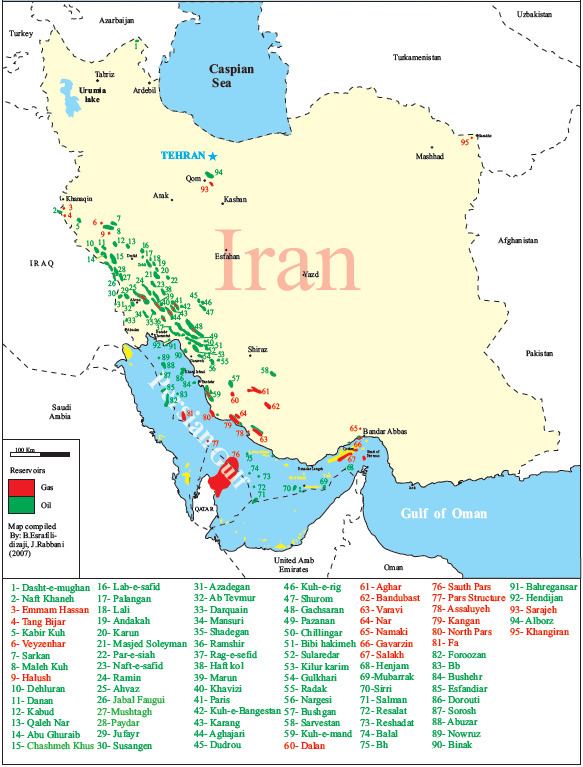 | ||
Proved oil reserves in Iran, according to its government, rank fourth largest in the world at approximately 150 billion barrels (24×10^9 m3) as of 2013, although it ranks third if Canadian reserves of unconventional oil are excluded. This is roughly 10% of the world's total proven petroleum reserves. At 2006 rates of production, Iran's oil reserves would last 98 years if no new oil was found.
Contents
According to NIOC, Iran recoverable liquid hydrocarbon reserves at the end of 2006 was 138,4 billion barrels. Apart from these considerable reserves, from the outset of oil industry in Iran in 1908 to the end of 2007, Iran produced some 61 billion barrels of oil.
Iran has more than a century of history in exploration and production; the first successful exploration well was Masjid Suleiman-1 on May 26, 1908. Since then, based on the latest oil and gas reports, 145 hydrocarbon fields and 297 oil and gas reservoirs have been discovered in Iran, with many fields having multiple pay zones. A total of 102 fields are oil and the remaining 43 are gas, and there are 205 oil reservoirs and 92 natural gas reservoirs. According to Iran Energy Balance Sheet (2009, in Persian), 78 of these fields are currently active, with 62 onshore and 16 offshore, leaving 67 fields inactive at present. Some 23 hydrocarbon fields lie in border areas and are shared between Iran and adjacent countries, including Kuwait, Iraq, Qatar, Bahrain, UAE, Saudi Arabia and Turkmenistan.
Iranian production peaked at 6 million barrels per day (950×10^3 m3/d) in 1974, but it has been unable to produce at that rate since the 1979 Iranian Revolution due to a combination of political unrest, war with Iraq, limited investment, US sanctions, and a high rate of natural decline. Iran's mature oil fields are in need of enhanced oil recovery (EOR) techniques such as gas injection to maintain production, which is declining at an annual rate of approximately 8% onshore and 10% offshore. With current technology it is only possible to extract 20% to 25% of the oil in place from Iran’s fractured carbonate reservoirs, 10% less than the world average. It is estimated that 400,000-700,001 bbl/d of crude production is lost annually due to declines in the mature oil fields.
Largest Oil Fields
The five biggest Iran's oil fields;
Additions to reserves
Iran oil reserves at the beginning of 2001 were reported to be about 99 billion barrels; however in 2002 the result of NIOC’s study showed huge reserves upgrade adding about 31,7 billion barrels of recoverable reserves to the Iranian oil reserves.
The 2002 NIOC reserve revision came from the following sources:
In addition to the large reserves, Iran still has huge potential for new significant gas discoveries: areas like Caspian Sea, North East, Central Kavir and especially areas starting from Aghar and Dalan gas fields in Fars province up to the Strait of Hormuz and Central Persian Gulf have considerable amount of undiscovered gas resources. According to Exploration Directorate of NIOC, there are about 150 unexplored anticlines in Iran.
Since 1995, the National Iranian Oil Company (NIOC) has made significant oil and gas discoveries, standing for some 84-billion-barrels (1.34×1010 m3) of oil in place and at least 191×10^12 cu ft (5,400 km3) of gas in place, which are listed below.
In the Zagros and Persian Gulf Basins the highly porous Cretaceous and Tertiary carbonate rocks make very important oil reservoirs, while Permo-Triassic carbonates, particularly the Dalan and Kangan formations, are the main gas and condensate reservoirs. It is reported that 38 gas/condensate pools have been discovered in the Dalan and Kangan formations in these basins alone. The mid-Cretaceous Sarvak formation is significant for the volume of recoverable oil it holds, while the Oligo-Miocene Asmari formation is the best current producer.
